Understanding AMD
What is AMD?
...and why you should take it seriously.
Age-related macular degeneration (AMD) is the world’s leading cause of severe and irreversible vision loss in people over 50. Studies show that AMD may be hereditary, and it’s recommended that anyone with a family history of AMD should have their eyes examined.
AMD affects the macula at the back of your eye, the part of the retina that controls your central vision, which lets you see fine detail like images directly in front of you or words on a page.
AMD progresses through early, intermediate, and advanced stages. Regular monitoring helps detect conversion to the wet form of the advanced stage, which can cause a rapid decline in vision. How quickly the disease progresses varies from person to person, and from eye to eye. Regular monitoring helps detect conversion to the wet form of the advanced stage, which can cause a rapid decline in vision.
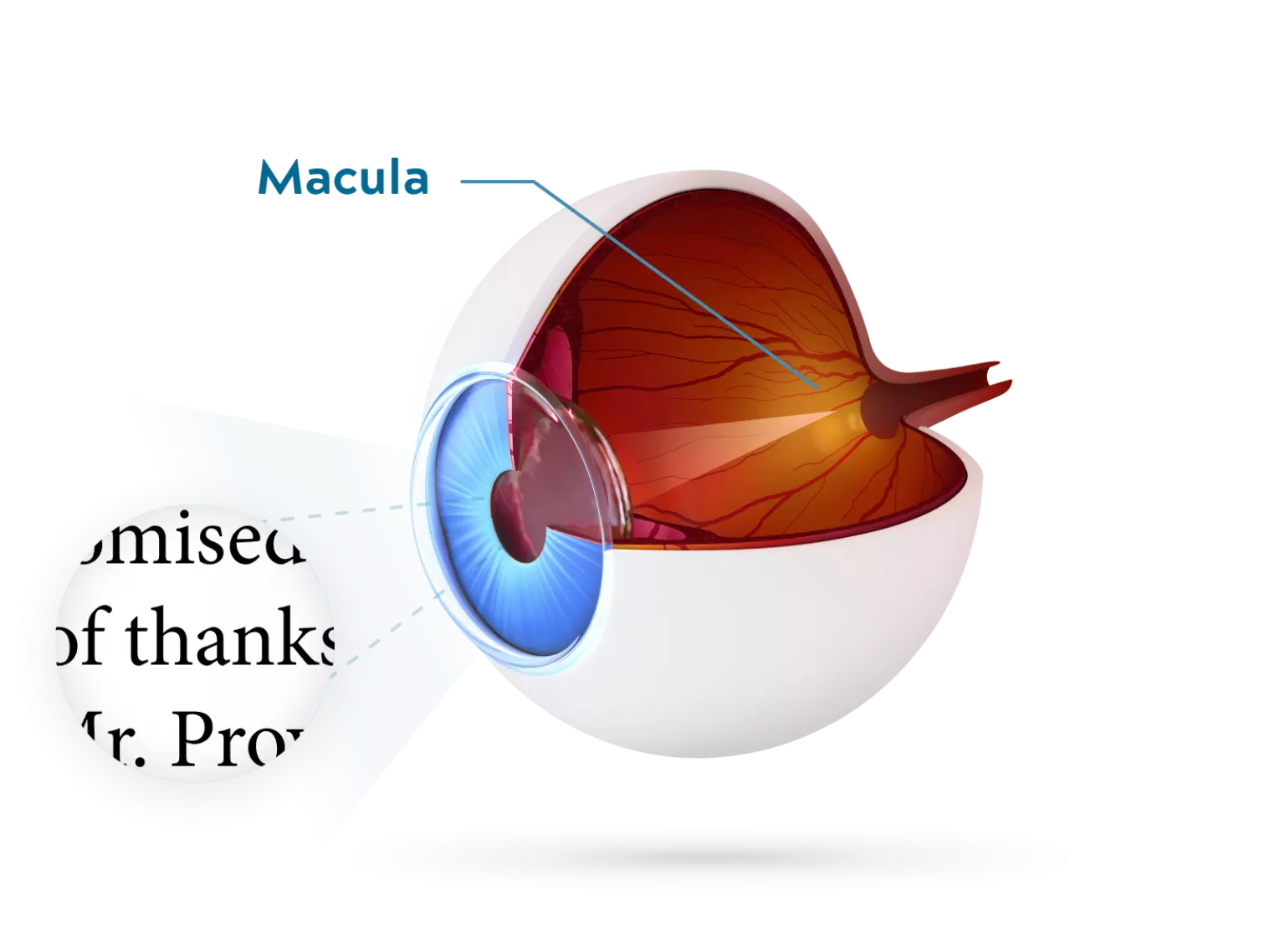
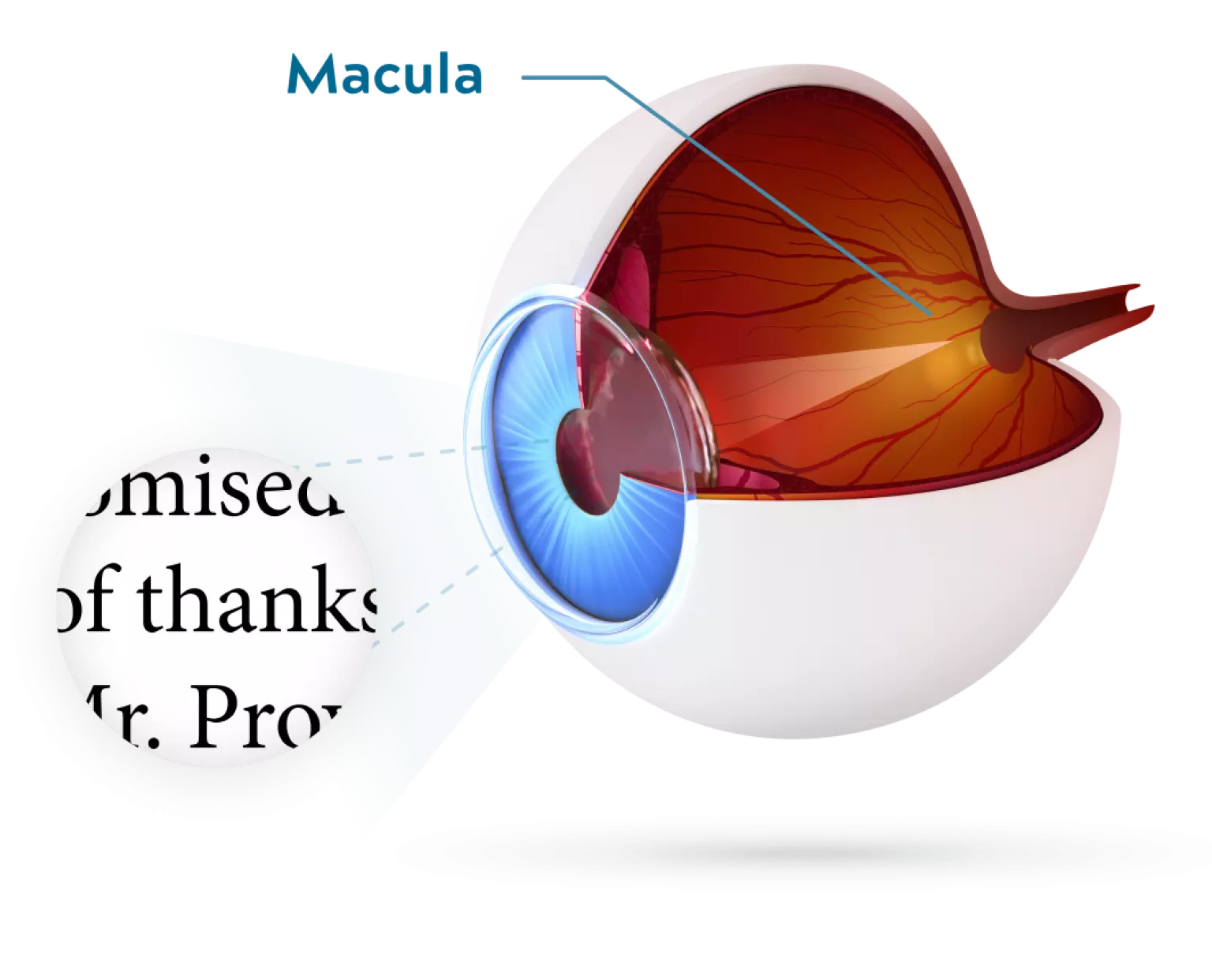
There are three stages of AMD - early, intermediate, and advanced.
Intermediate Dry AMD
In intermediate dry AMD, among other changes, yellow-colored fatty deposits called “drusen” build up in the cells of the macula. These can be detected by your eye doctor during a comprehensive eye exam. As the size and number of these deposits increase in the cells of the macula, so does your risk of developing wet AMD. You may not notice any of these changes in your vision over time.
What Your Eye Doctor Sees
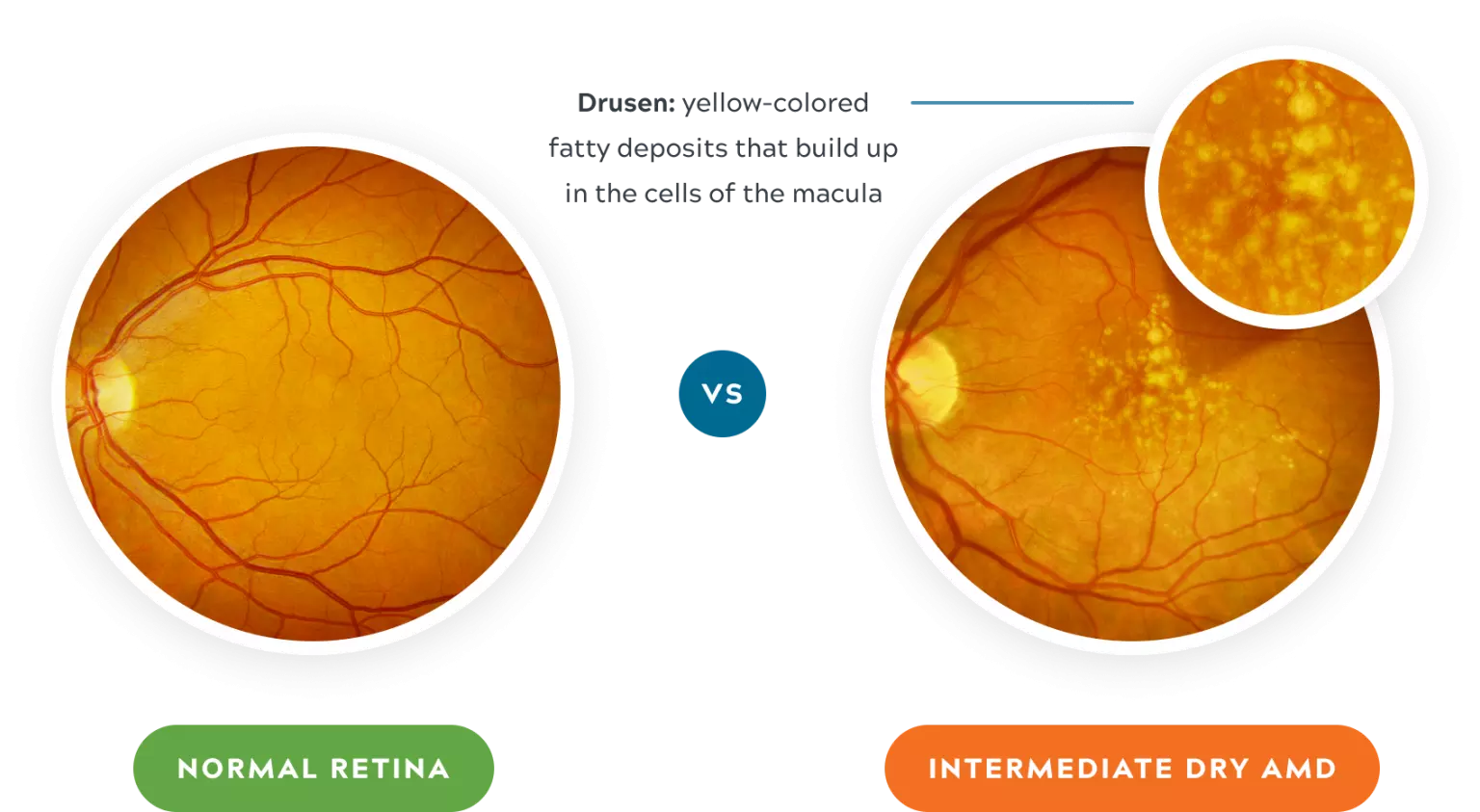
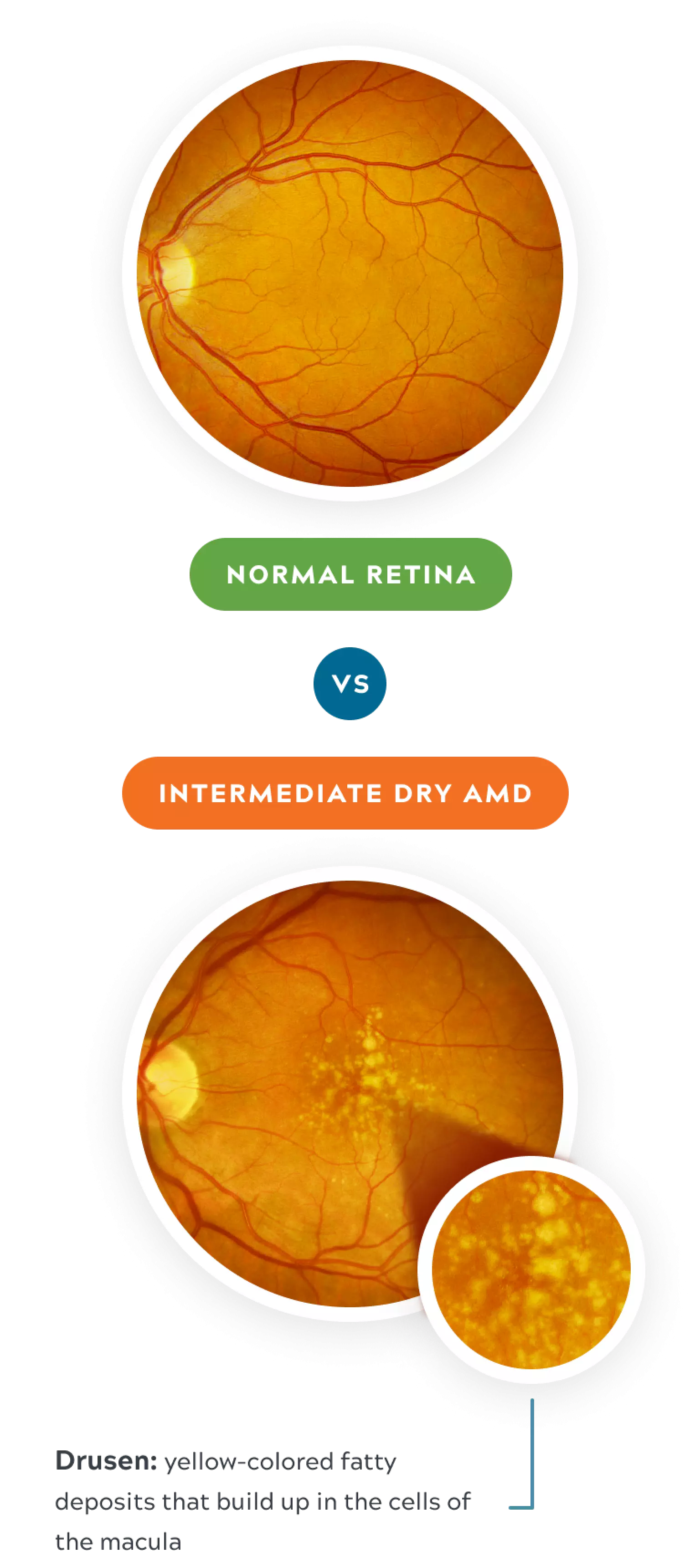
Intermediate Dry AMD vs. Dry Eye
Intermediate dry AMD is not the same as “dry eye” and there is no connection between the two. Someone with dry eye doesn’t have enough quality tears to lubricate and nourish the eye. Dry eye affects the front, outside part of the eye whereas intermediate dry AMD affects the back, inside part of the eye.
Symptoms may include:
- blurry vision up close (such as difficulty seeing sharp details)
- blurry vision both up close and at a distance
- no symptoms at all, or do not notice any of these changes in their vision over time
There is no treatment for intermediate dry AMD, and it can suddenly change to wet AMD without you even noticing. The chances of your intermediate dry AMD progressing to the more severe wet stage increases as the disease progresses over time.

1 in 3 patients convert to wet AMD in their other eye within 24 months after wet AMD was diagnosed in the first eye. Home monitoring for your other eye has been proven to help maintain your good vision.
Wet AMD
People with intermediate dry AMD are at a much higher risk of progressing to a more advanced form called wet AMD. In wet AMD, abnormal blood vessels can suddenly leak fluid in or near the macula. You may not notice any changes until significant vision loss has occurred.
Wet AMD destroys the pinpoint vision needed to see objects clearly and may cause permanent vision loss if left undetected for too long. You could lose functional vision, which allows you to drive, read, or do other daily tasks.
Wet AMD is also known as “neovascular” or “exudative” AMD.
What Your Eye Doctor Sees
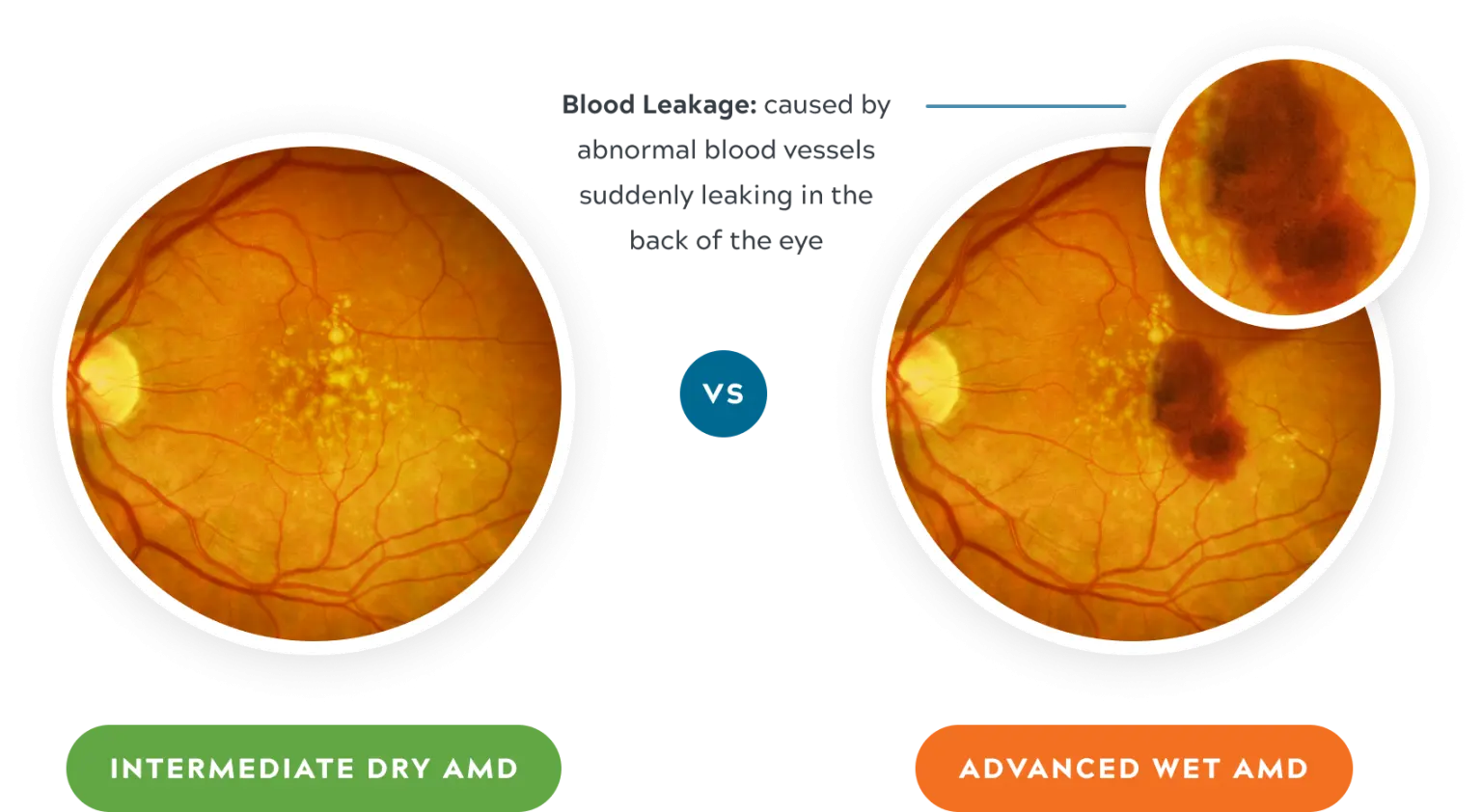
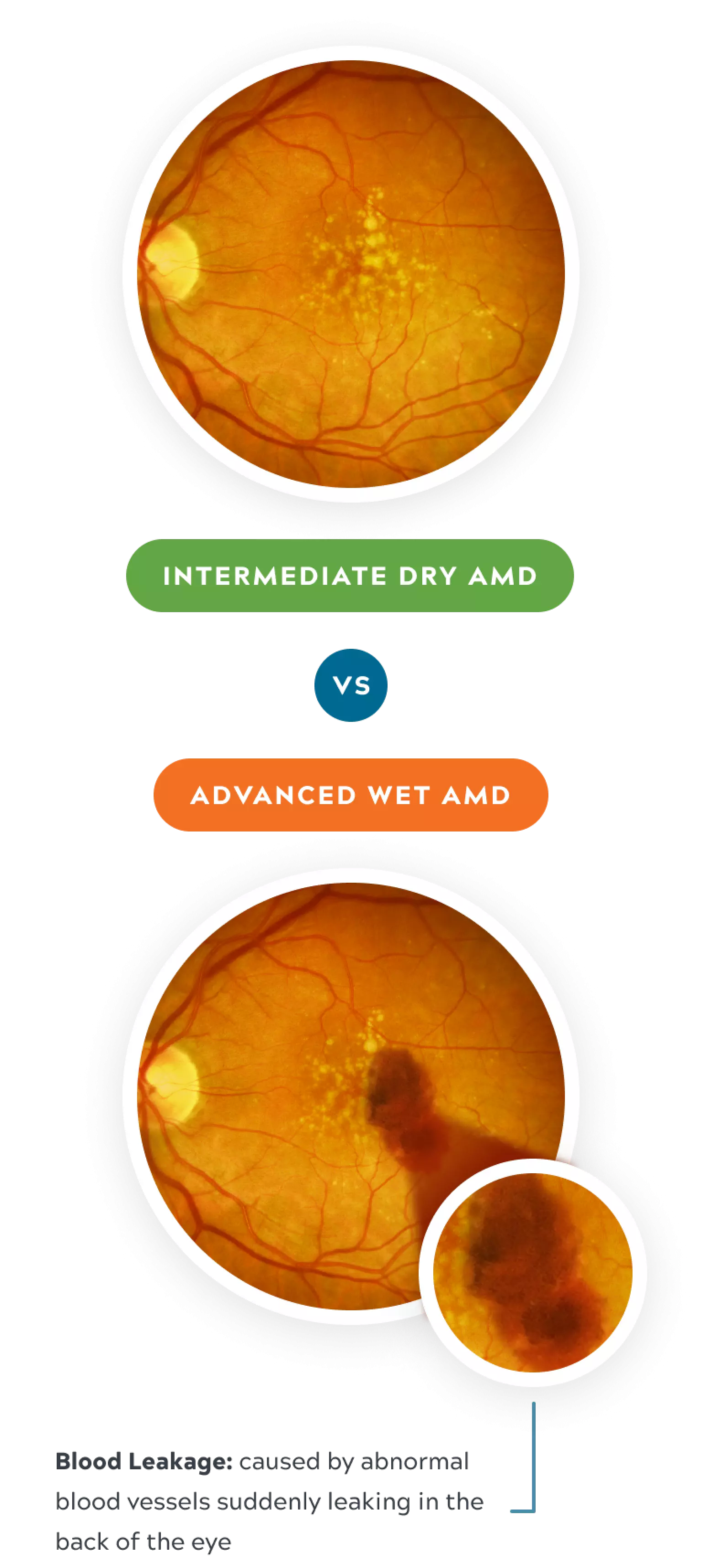
When you have wet AMD your central vision becomes distorted. Symptoms include:
Blurry vision
Distortion of vision, straight lines look wavy
Dark spot (or spots) in the center of your vision
Wet AMD can severely impact your quality of life and limit your independence. It can make many of the activities you enjoy and rely on impossible; like driving, reading, watching television, and using a computer.
Catching the progression from intermediate dry to wet AMD as soon as possible is critical to prevent irreversible vision loss. It gives you the best chance of maintaining the vision you rely on every day and your independence. ForeseeHome can help.
Disease Progression
Severe vision loss can happen rapidly if wet AMD treatment is delayed. You may not notice any changes in your vision until significant vision loss has occurred.
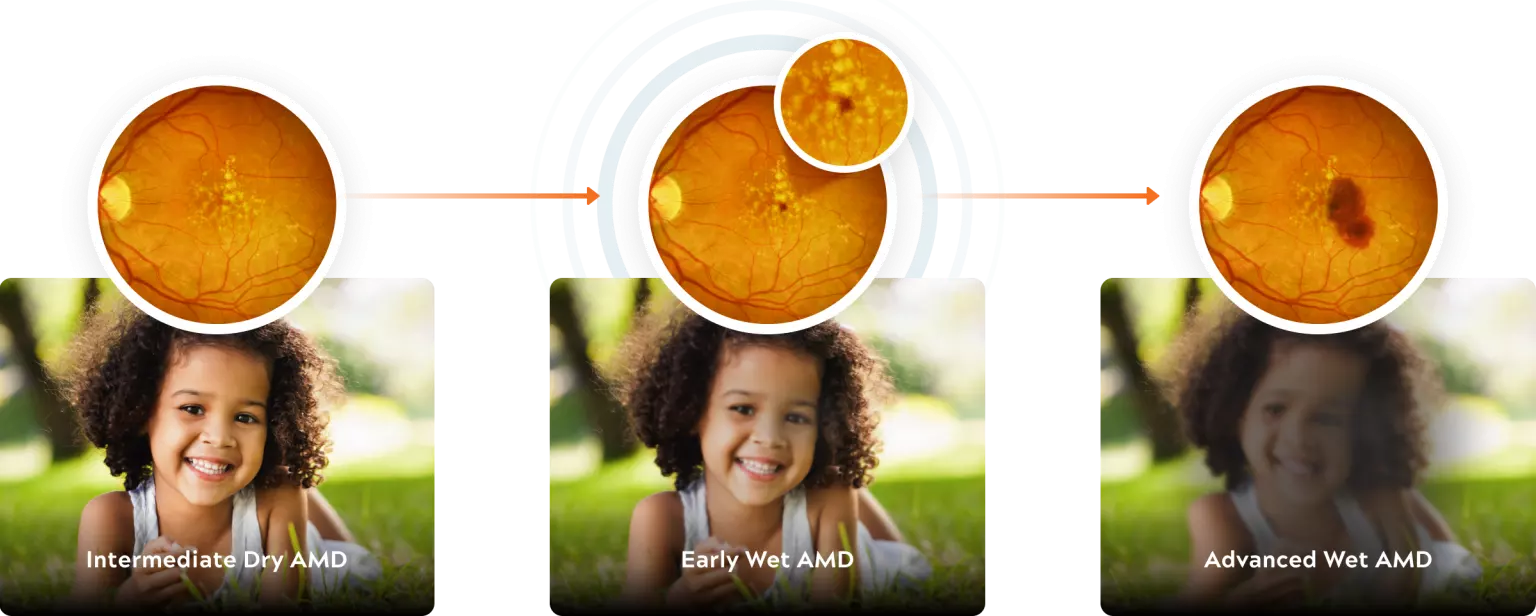
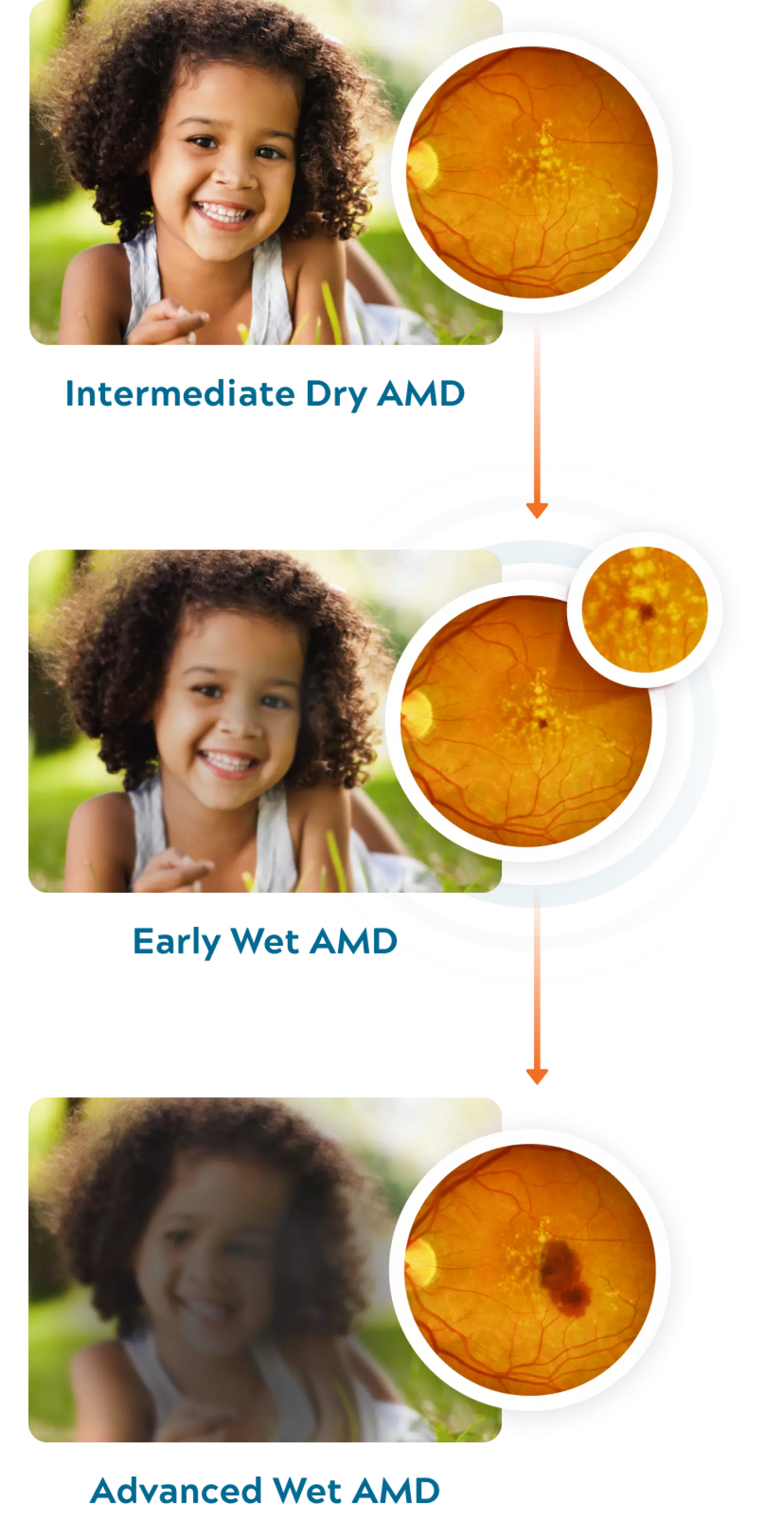
Wet AMD Treatment
Unlike intermediate dry AMD, there are effective treatments for wet AMD.

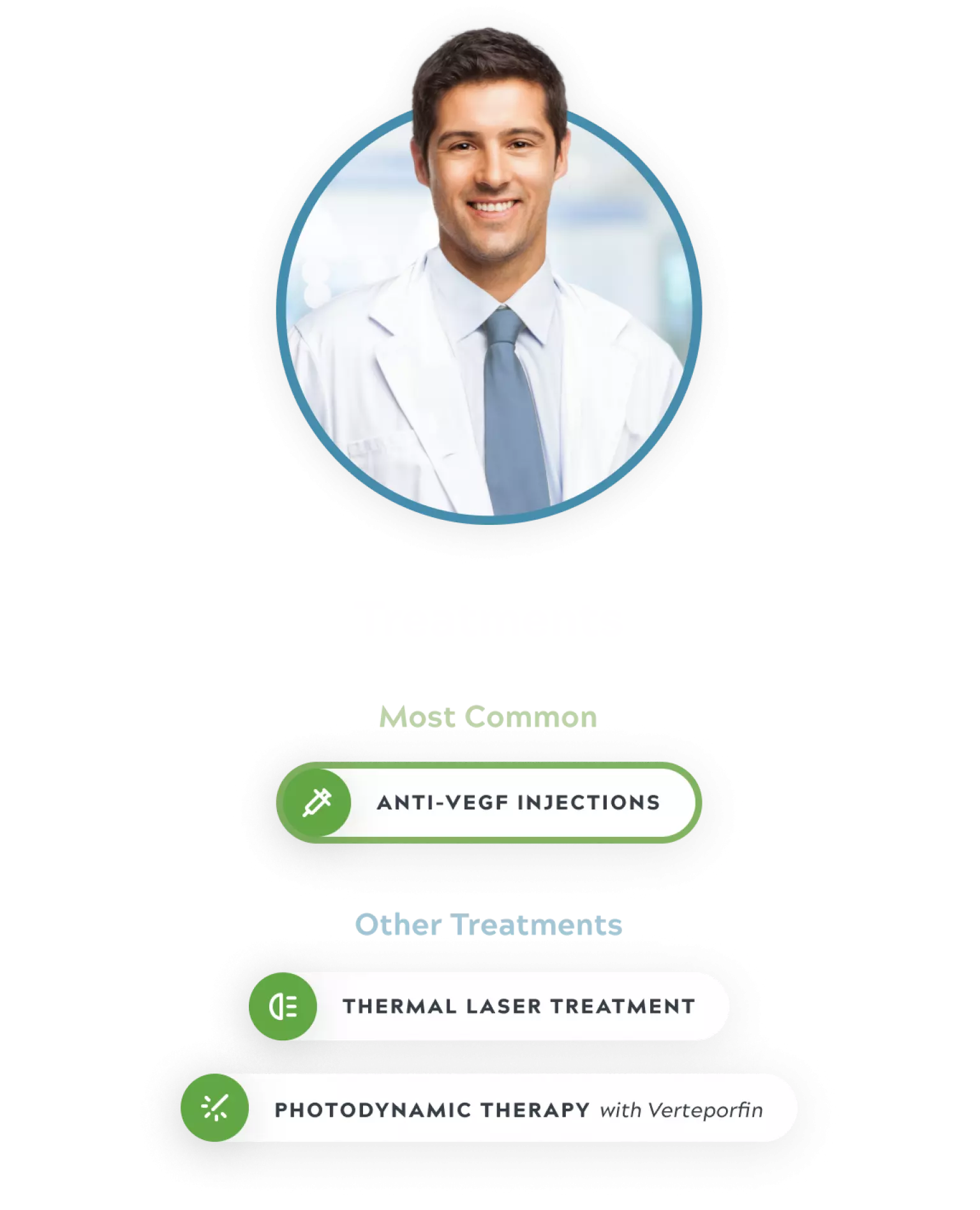
Studies have shown that these treatments are most effective when initiated early, before any symptom are noticed and vision loss has occurred.
- The disease will continue to progress until treatment begins
- Rapid and severe vision loss can happen very quickly if treatment is delayed
- Treatments can stop or slow the progression of wet AMD but cannot restore vision that has already been lost
- You may not notice any changes in your vision until significant vision loss has occurred
ForeseeHome helps your doctor detect wet AMD earlier so treatment can begin earlier.